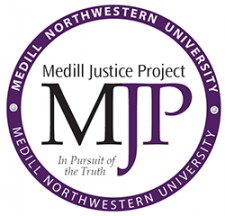Medill Justice Project Investigation Finds Crucial Details Overlooked in Case Against Florida Man Condemned to Death Row

ORLANDO, Fla., June 13, 2016 (Newswire.com) - In an investigation of a 40-year-old Florida murder case, a team of Northwestern University undergraduate and graduate students has discovered significant details overlooked in the case and ballistics evidence that points away from Tommy Zeigler, who was convicted of the crime. The students’ investigation (www.medilljusticeproject.org) also found conflicting accounts from key eyewitnesses that raise questions about what happened when four people were killed in a bloody massacre in a furniture store in Winter Garden, near Orlando, Florida.
“What the students have uncovered is remarkable and significantly challenges the conviction of a man who faces the death penalty,” said Northwestern University Prof. Alec Klein, director of The Medill Justice Project, who oversaw the 10 students’ work as part of a class he teaches.
"What the students have uncovered is remarkable and significantly challenge the conviction of a man who faces the death penalty."
Alec Klein, Northwestern University Professor and Director of The Medill Justice Project
Among The Medill Justice Project’s findings:
- Two witnesses call into question Zeigler’s guilt but their accounts never made it into the trial. Those witnesses, Ken and Linda Roach, heard 12 to 15 gun shots within four seconds as they were driving by the furniture store where the murders took place. The Roaches said authorities were not interested in hearing their story and wouldn’t provide information for them to contact the defense attorneys. Ballistics experts interviewed for this story say it would be virtually impossible for a single person to fire a non-automatic weapon so quickly.
-
Zeigler, who has always maintained his innocence, was discovered at the crime scene with a bullet hole through his lower torso. At trial, the prosecution argued Zeigler shot himself to make it appear he was the victim of a robbery. But experts interviewed for this story say it is practically unheard of for someone to shoot themselves in such a critical place, risking death, to cover up a crime. The experts also note the angle of the bullet, as it passed through his body, would have required him to use his non-dominant left hand to fire the weapon. And based on ballistics evidence, Zeigler would have had to shoot himself with the gun positioned away from his body, depriving him of the ability to stabilize the gun’s muzzle against his body.
- The two key witnesses against Zeigler offered accounts of the night of the crime that have changed over the years while details have disappeared, according to interviews with sources, police records, trial transcripts and other court documents as well as investigative reports.
Reprints
Other media outlets can run this story with the accompanying photos, videos and audio clips as long as the material is not edited and The Medill Justice Project is credited in the byline.
About The Medill Justice Project
The Medill Justice Project, founded at Northwestern University in 1999, is an award-winning national investigative journalism center that examines potentially wrongful convictions, probes national systemic criminal justice issues and conducts groundbreaking research. As journalists, MJP advocates only for the truth.
For more information:
Prof. Alec Klein, Northwestern University
Director, The Medill Justice Project
(847) 467-4476
alec-klein@northwestern.edu
Amanda Westrich
Director of operations, The Medill Justice Project
(847) 467-5307
amanda.westrich@northwestern.edu
Allisha Azlan
Associate, The Medill Justice Project
(847) 491-5840
allisha.azlan@northwestern.edu
Source: The Medill Justice Project